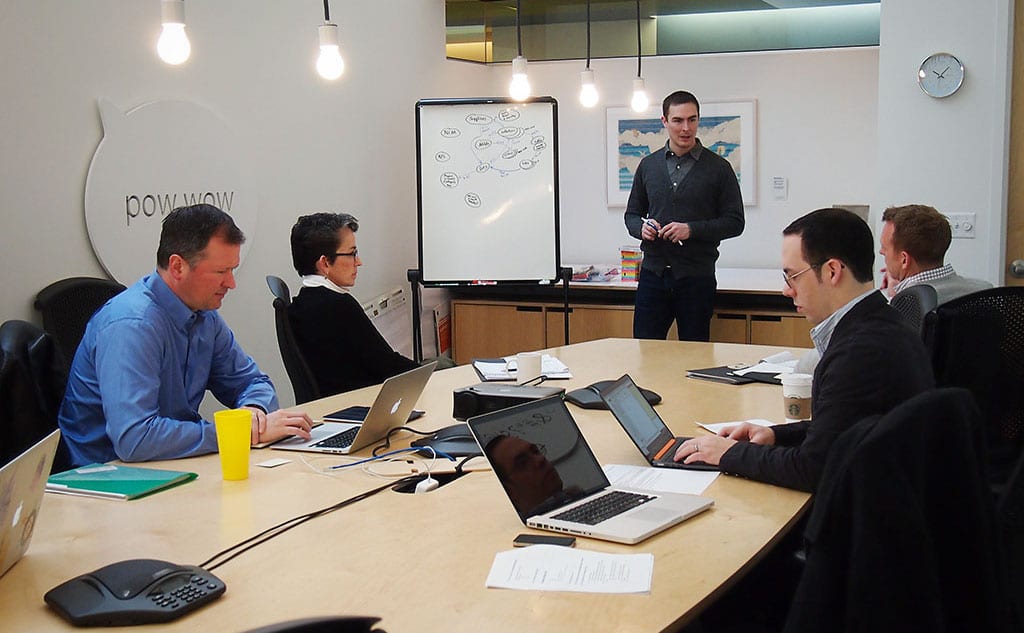Client meetings can be stressful and nerve-wracking or exciting and productive. Outlined below are five basic concepts I try to uphold for meetings to help improve the chances for a productive and successful client meeting. These concepts fall under the category of preparation for me. By being prepared, I’m better set up to meet and exceed client’s needs, and that is always good for business.
So here is a friendly reminder to help start your client meetings off on the right foot, strive for excellence, and bring back the basics.
1. Be early.
Being early shows you care and you’re dedicated. Early in the relationship, I like to show up to a client’s office at least 20 minutes before the meeting. This is my traffic buffer, which needs to be adjusted based on distance, weather, etc. I will review my notes and/or presentation for the meeting in my parked vehicle. I typically wait 5 minutes before the meeting to walk into the building. I find this very beneficial to be able to have a buffer so I can walk in calm and collected not being stressed about making it there in time. It take a bit more forethought and effort, but I find it well worth it.
Keep in mind, walking in the door at the clients much earlier that 15 minutes can be seen as rude and distracting, so be early, but not too early.
2. Be clean & well dressed.
This one is very straight forward. The saying about dress at Atomic is that you should raise the average. Being properly dressed is incredibly important for client meetings. Our customers are paying good money for our professional services.
Often many of our clients are startups, which are pretty laid-back when it comes to dress. Fight the urge to wear jeans and a T-shirt. In this case, maybe a polo is a better option than a dress shirt. Your dress isn’t going to make you a better consultant, but dressing poorly can degrade the image you portray and the brand you are trying to uphold.
3. Know the agenda.
Know what is going to be covered at the meeting. If I haven’t seen an agenda a few days before the meeting, I like to propose one. Write an email listing the topics that should be covered in the order of importance. This saves them time, helps you impact the direction of the meeting, and shows you care.
Once you have the agenda set, review it so you know what will be covered. Spend the time to prepare your work and practice your presentation so you are ready to come into the meeting at full steam.
When discussions inevitably drift from the topic at hand, it’s always good to make note of the topic and end that conversation with the excuse of “sticking to the agenda.” This way the team can stay focused and accomplish the agreed upon tasks, and you have a scape goat. This is very helpful for people like me who are focused on task at hand, but can come across as uptight when we try to steer the meeting back on course. This can also help you steer away from topics you’re not completely prepared to cover.
4. Be present.
Being present in a meeting means your are engaged. This is pretty simple if you are the one presenting, but it can easily become more challenging after a late night or when a meeting starts to drag on. You can use your body language and verbal communication to participate where you can. Take notes, but try not to engage too often with your laptop or phone. Notebooks are a great too!
I often like to lower my screen when I’m not taking notes to help reinforce that the person talking has my attention. Use eye contact, nodding, and verbal cues to ensure engagement is being noticed.
5. Assign action steps.
Action steps are to-do items that are assigned to members of the team. By assigning responsibility of the tasks, to-do items can be better tracked and teammates can be held accountable. It helps if you assign tasks to a single person. I often use Trello to document who was delegated a task, in order to follow up later. It’s great because you can set reminders and semi-automate the follow up process.
These are all basic steps that reinforce your client’s perception of the great work you are doing. These items alone will not help you and your team complete a project or think like a successful consultant, but they will definitely help you get there more smoothly.

